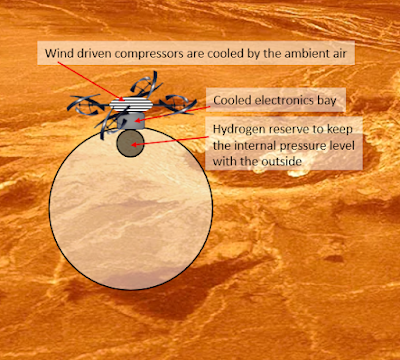I had previously stated the feasibility of a floating Venus base. As seen from the research data, there are regions on Venus’s atmosphere where the temperature is low enough to maintain the sensitive equipment operational without active cooling. Such thermal differences would condense the water and sulfuric acid vapors. This would allow the floating base to extract hydrogen and water from the atmosphere. Additionally, hydrogen gas can be combined with the abundant carbon dioxide to yield methane and oxygen, rocket propellent.
Flying over the strong sand storms of the Venus atmosphere would be like flying inside a sand blaster. Therefore, usage of balloons would be limited due strong abrasion. I propose a multiplane design which would have strong wings and large lift to drag ratio. The tips of the flying multi-wing would have wind turbines to generate electric from the wind. The multiplane should have high lifting power for the given atmospheric winds. Therefore, even with the reduced flying speed due to drag induced by multiple wings and the wind turbine, it should stay aloft. The plane will act like a glider and will have no active propulsion. When the plane wants to change its elevation, the middle wings will collapse or expand to change the air lift.
There will be multiple versions of these bases. They will operate independently. One type will be optimized to generate rocket propellent only. Another will have test equipment to analyze the samples. The cold region of Venus is a limited area. The flying base will only circle on that region and the ground research will only be conducted below that region. The ground samples will be gathered by high temperature operable pneumatic robot spiders. These samples will be transported between the ground and the flying base via transporter rocket.






